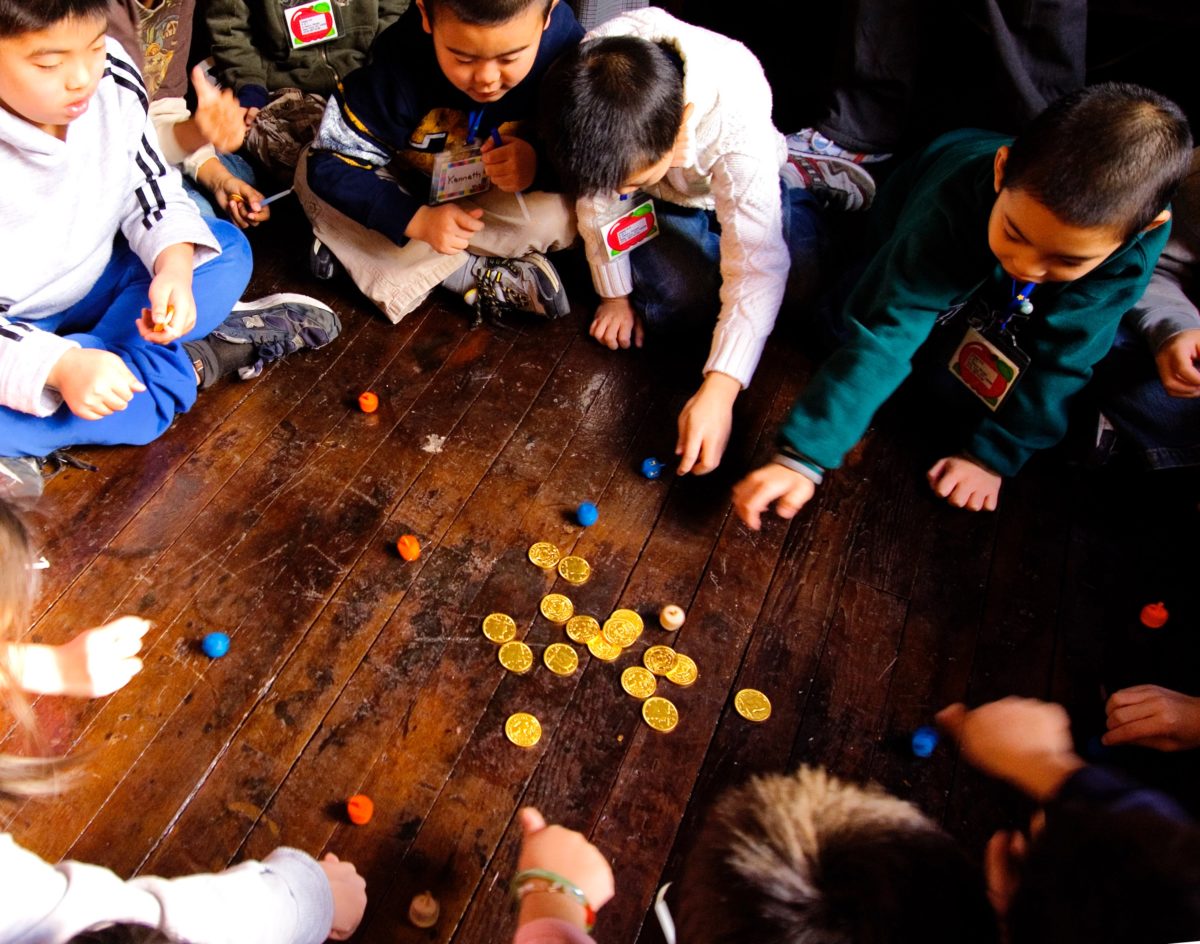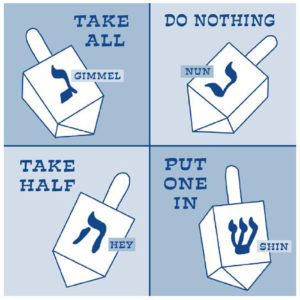
How to Play Dreidel
On a traditional dreidel, each side bears one letter from the Hebrew alphabet. Together, these letters stand for the phrase, “A great miracle happened here.” Played with during Hanukkah, this toy was originally modified from an English/Irish top that was brought to Germany. At the time, the top was known as a teetotum.
Later on, the toy was adopted from German letters to the Hebrew alphabet. Besides the interpretive symbolism, the letters also serve as a reminder as to how to play the game. Shin stands for “put in”, gimel means “whole or everything”, nun stands for “nothing” and hey means “half.” In Hebrew, a dreidel is often called a sevivon, which means “to turn around.”
What are the stakes?
Around the world, Jewish homes play with the dreidel as a part of a traditional Hanukkah ritual. Any number of people can take part in the game, so it is ideal for any family size. Each player in the game is given an equal number of game pieces. While pennies or coins are often used, the game is most often played with chocolate coins.
Rules of the Game
To start with, every player adds their ante to the pot. This will be won during the game. Whenever the pot is empty or has just one piece, each player adds another ante.
 When it is your turn, you spin the dreidel once. Once it lands, you look at the letter on the side that it lands on. If you get a nun, you receive nothing. A gimel means that you receive everything that is in the pot. Meanwhile, a shin means that you have to put in a game piece in the pot. If you get a hey, you receive half of the pot. Whenever there is an odd number of pieces in the pot, you can take half of the pot plus an extra piece.
When it is your turn, you spin the dreidel once. Once it lands, you look at the letter on the side that it lands on. If you get a nun, you receive nothing. A gimel means that you receive everything that is in the pot. Meanwhile, a shin means that you have to put in a game piece in the pot. If you get a hey, you receive half of the pot. Whenever there is an odd number of pieces in the pot, you can take half of the pot plus an extra piece.
If you run out of chocolate coins or other game pieces, then you are out of the game. Depending on your family’s tradition, you may also be able to ask another player for a loan. Once someone has won the entire pot, then the round is over.
Popular Dreidel Traditions
While every family has different traditions, there are some that are common throughout the world. Today, many families choose to donate part or all of their winnings to charity. Some parents will also match the amount of money their children donate so that less fortunate families can have Hanukkah gifts.
During Hanukkah, it is also common for children to be given Hanukkah gelt (money). This tradition started in the 17th century by Jewish families in Poland. During the 20th century, American chocolatiers modified this tradition by creating Hanukkah chocolate coins. Wrapped in foil, these coins were given out to children during Hanukkah and were perfect for betting in dreidel. Today, many families use chocolate coins instead of actual money for playing dreidel.